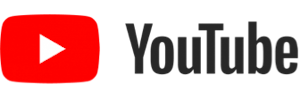
Countdown of the top 10 episodes of the year

If you ever wanted to distill 3,310 hours of knowledge into 60 minutes, then this episode is for you. For the last 6 months, Lenny’s Podcast has been downloaded more than 2 million times and is now a top 10 technology podcast across both Apple and Spotify. And in this special episode, I’m breaking down the top 10 most downloaded episodes, plus sharing my favorite lessons from each. It's unlike anything I've done before, and I hope you love it. Happy holidays, happy new year, and from the bottom of my heart, thank you so much for listening, sharing, and for supporting the podcast. I’ll see you in 2023!
—
Thank you to our wonderful sponsors for supporting this podcast:
• TED—ReThinking with Adam Grant: https://adamgrant.net/podcasts/rethinking/
• Notion—One workspace. Every team: https://www.notion.com/lennyspod
• Vanta—Automate compliance. Simplify security: https://vanta.com/lenny
—
Where to find Lenny:
• Newsletter: https://www.lennysnewsletter.com
• Twitter: https://twitter.com/lennysan
• LinkedIn: https://www.linkedin.com/in/lennyrachitsky/
—
The 10 most downloaded episodes of 2022:
* April Dunford on Lenny’s Podcast: https://www.lennyspodcast.com/april-dunford-on-product-positioning-segmentation-and-optimizing-your-sales-process/
* Crystal Widjaja on Lenny’s Podcast: https://www.lennyspodcast.com/how-to-scrappily-hire-for-measure-and-unlock-growth-crystal-widjaja-gojek-and-kumu/
* Julie Zhuo on Lenny’s Podcast: https://www.lennyspodcast.com/julie-zhuo-on-accelerating-your-career-impostor-syndrome-writing-building-product-sense-using-intuition-vs-data-hiring-designers-and-moving-into-management/
* Shishir Mehrotra on Lenny’s Podcast: https://www.lennyspodcast.com/the-rituals-of-great-teams-shishir-mehrotra-coda-youtube-microsoft/
* Kristen Berman on Lenny’s Podcast: https://www.lennyspodcast.com/using-behavioral-science-to-improve-your-product-kristen-berman-irrational-labs/
* Elena Verna on Lenny’s Podcast: https://www.lennyspodcast.com/elena-verna-on-how-b2b-growth-is-changing-product-led-growth-product-led-sales-why-you-should-go-freemium-not-trial-what-features-to-make-free-and-much-more/
* Ethan Smith on Lenny’s Podcast: https://www.lennyspodcast.com/the-ultimate-guide-to-seo-ethan-smith-graphite/
* Shreyas Doshi on Lenny’s Podcast: https://www.lennyspodcast.com/shreyas-doshi-on-pre-mortems-the-lno-framework-the-three-levels-of-product-work-why-most-execution-problems-are-strategy-problems-and-roi-vs-opportunity-cost-thinking/
* Marty Cagan on Lenny’s Podcast: https://www.lennyspodcast.com/the-nature-of-product-marty-cagan-silicon-valley-product-group/
* Matt Mochary on Lenny’s Podcast: https://www.lennyspodcast.com/how-to-fire-people-with-grace-work-through-fear-and-nurture-innovation-matt-mochary-ceo-coach/
—
In this episode, we cover:
(00:00) About this episode
(02:46) April Dunford on positioning your product
(07:16) Crystal Widjaja on why most analytics efforts fail
(11:42) Julie Zhuo on overcoming imposter syndrome
(19:14) Shishir Mehrotra’s favorite interview question
(23:27) Shishir Mehrotra’s PSHE career growth framework
(27:10) Kristen Berman on using behavioral science to improve your product
(33:29) Elena Verna on why retention is so important
(36:31) Elena Verna on what to put into your freemium product
(37:57) Ethan Smith on how people often under-resource SEO
(38:46) Ethan Smith on when it’s time to invest in SEO
(42:41) Shreyas Doshi’s LNO Framework
(50:12) Marty Cagan on why big companies are often bad at product
(51:46) Marty Cagan’s four steps to being a good product manager
(53:48) Matt Mochary on the power of small teams
(57:17) Matt Mochary’s advice for making hard conversations easier
(59:05) Other episodes that left a lasting impact
(59:40) Thank you for joining me (Lenny) on this incredible journey
—
Production and marketing by https://penname.co/. For inquiries about sponsoring the podcast, email podcast@lennyrachitsky.com.
Get full access to Lenny's Newsletter at www.lennysnewsletter.com/subscribe











